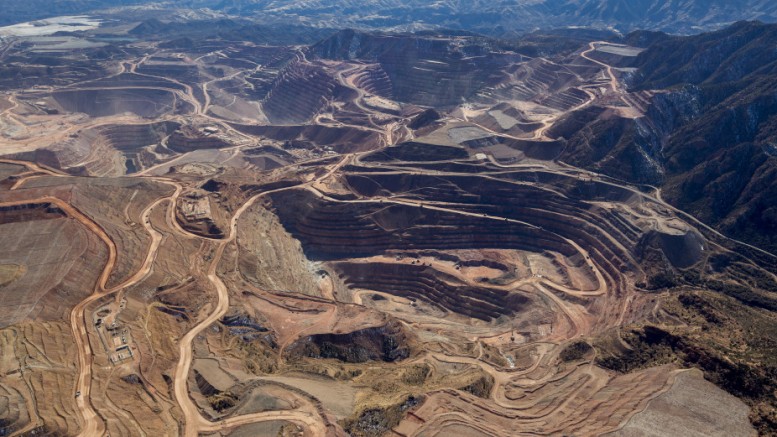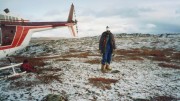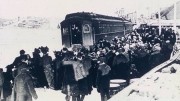Mike Fitzgerald was in no way the smooth-operator type found in the universe of large corporations. His mannerisms appeared more like those of a boxer, and for good reason — in his younger days he was an accomplished middleweight fighter.
Mike never was one to toot his own horn, but his rough mien concealed a deep scientific curiosity, which served him well as a geologist. Perhaps his greatest success, shared with partner Harry Ranspot, was during the early 1970s, when they first recognized the potential of what is now Barrick’s Goldstrike complex in Nevada’s Carlin Trend. They staked critical ground there and were its first vendors.
But our story begins in 1957, just after Mike graduated as a geological engineer from the University of Minnesota, and was hired by Phelps Dodge as a mine geologist at its giant Morenci copper mine in eastern Arizona.
Shortly before Mike was hired, Phelps Dodge’s New York office management got wind of a large drilling project in the Safford District being conducted by Kennecott Copper’s exploration subsidiary.
Phelps Dodge considered Safford — close to Morenci — as their domain, and an encroaching competitor was an embarrassment. New York quickly issued a directive to its Douglas, Ariz., exploration office: Get us a property in the Safford area.
By coincidence a short time later, W. D. Roper, a claim owner in the Safford district, walked into Phelps Dodge’s Douglas office and talked up his property, which was in a low relief area south and downslope from Kennecott’s property. At the time Phelps Dodge’s two lead exploration geologists were out of the office, so Roper dealt with an executive manager. The manager, fully aware of the New York office decree, agreed to option Roper’s property, sight unseen, with a substantial work commitment, which could only be satisfied by drilling.
The exploration leaders returned to the office horrified by this acquisition. They had previously examined this property, and considered it a worthless dog. As the property is much closer to Morenci than Douglas, they asked the Morenci management if they could handle the required exploration, which they agreed to do.
The Morenci manager had one geologist on his staff, whom he disliked, and assigned him to carry out the Safford exploration along with Mike, who was only one month on the job. Their instructions were to pick out a few drill sites and let her rip. As Mike told me, “the decision was made for us — the property was going to be drilled.”
Now let me interject: During the 1950s, the conventional thought in Arizona exploration circles was that any porphyry copper deposit would be marked at surface by an extensive, limonitic leached capping. And certain features classified as a “friendly brown” colour and appropriate limonitic boxworks could diagnose underlying supergene enriched copper.
There were leached cappings in other parts of the Safford District, but Roper’s property was mainly underlain by massive black andesite with weak chrysocolla showings cut by infrequent, weakly mineralized monzonite porphyry dikes.
The two geologists began by mapping the hungry-looking rock, accompanied by limited rock sampling. They would find no sizable area averaging any better than 0.2% copper. They selected two drill sites, one in the area of the strongest copper showings, and the other in a distant area of weak limonite capping.
The hole testing the best copper showing at 20 feet deep entered oxidized copper grading 0.4% copper or more, and remained in this grade to 1,500 feet deep, after which it intersected a 300-foot-thick zone of chalcopyrite-bornite ore averaging 1% to 1.5% copper, followed by ore grade to 3,000 feet, where the hole stopped. The second hole cut weak copper-bearing pyritic rock until 2,500 feet deep, where ore grade intersected the hole bottom.
These findings, of course, led to a major drilling project, which indicated a huge orebody of leachable copper with an average 0.7% copper grade.
Before he passed away in 2009, Mike witnessed Phelps Dodge putting the property into production 50 years after its discovery at a rate of at least 200 million lb. copper annually. Shortly thereafter Phelps Dodge was acquired by Freeport-McMoRan, which currently operates the mine.

In 2015, copper production at Safford (shown above) amounted to 202 million lb. and as of Dec. 31, 2015, more than 700 people were employed there. Credit: Freeport-McMoRan
Turning to geology and following Mike’s account: The reason the surface showings in the black andesite were so weak is that the sulphides oxidized into a combination of chrysocolla and earthy cuprite, and the soft cuprite “whipped out” from the near surface, leaving only chrysocolla.
As we know from mineralogy, cuprite contains a high copper ratio compared to chrysocolla, which is a hodgepodge of compounds.
Several years after the discovery, geologists determined that the massive black andesite was in fact an intensely altered rock, with its black colour enhanced by secondary biotite. It would be technically classified as potassic alteration.
After this success right out of school, Mike had two thoughts: Can the exploration business really be this easy? And more important, discoveries are more likely to be made if you don’t follow the herd. This latter thought influenced his thinking throughout his career.
From my own experience, I have heard countless times from negatively inclined geologists’ property evaluations: “Why should it get better at depth?”
This one got better within 20 feet of surface.
— The author is a geologist living in Washington State’s Spokane Valley.




Be the first to comment on "Odds ‘n’ Sods: Mike’s strange discovery in Arizona"